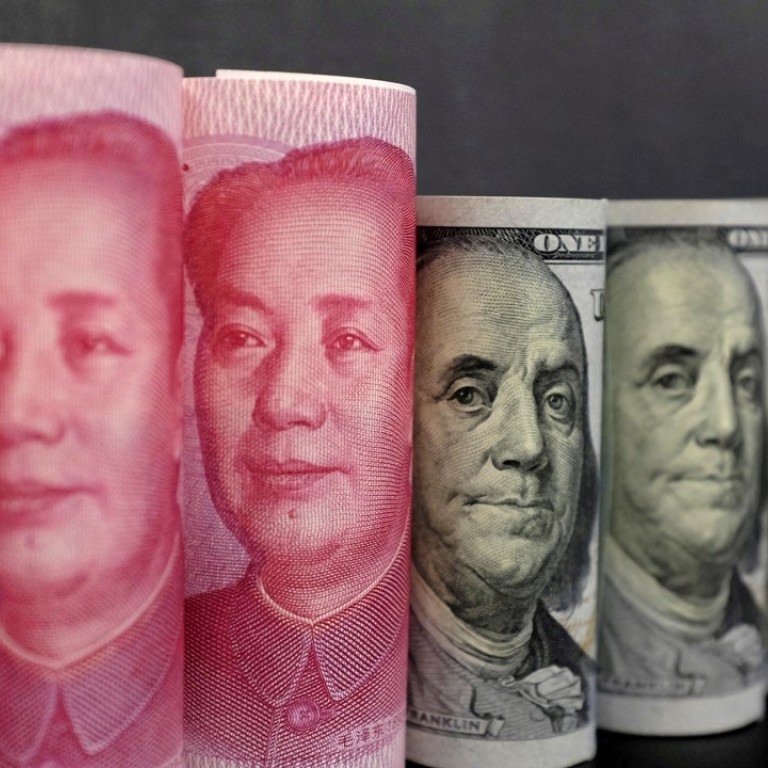Advertisement
Advertisement

Opinion
The View
by Hao Zhou and Esther Reichelt
The View
by Hao Zhou and Esther Reichelt
How the Trump-Xi phone call and rumours of a trade deal have provided short-term relief to the yuan, but cloud the long-term outlook
- Hao Zhou and Esther Reichelt say the ‘very good conversation’ on trade between the US and Chinese presidents has eased market fears
- However, the market is hesitant to take the US president too seriously, and the Chinese currency’s outlook remains uncertain
US President Donald Trump must have decided that this week’s midterm elections needed a jolt of good news – hence his tweet last Thursday that he had a “very good conversation” on trade with Chinese President Xi Jinping. In the meantime, China is also eager to de-escalate the trade conflict with the United States as its economy seems to cool further. China is hosting its first International Import Expo in Shanghai this week, a demonstration of its willingness to shrink its trade surplus by importing more goods and opening its domestic market.
While few believe that trade tensions between the US and China will totally dissipate in the near future, this “good conversation” came at a perfect time. It forms a solid basis for a meeting between the two leaders at the G20 summit at the end of the month. There is talk that Trump has asked his cabinet to draft a trade deal with China, though the White House has dismissed it. Still, the Chinese yuan has recovered, following the positive developments, and the yuan/dollar rate has strengthened to around 6.9, a safer distance from the psychologically important hurdle of 7. Clearly, the risk assets have also received a boost. In the first week of November, the Hang Seng Index rebounded sharply by 7.2 per cent, easing market fears somewhat.
Besides the new developments, the Chinese central bank has also taken a number of measures to support the renminbi. For example, for the first time, the People’s Bank of China is issuing central bank bills in Hong Kong: the first issuance is expected this week. The bills are seen as a move to increase interest rates in the offshore renminbi market and discourage speculators from shorting the yuan. The PBOC is signalling that it is actively tackling market expectations of further yuan depreciation, which justifies the currency’s rally in the short term.
Trump and Xi discuss trade war
The more important question, however, is where yuan/dollar will go from here. In the longer term, the renminbi’s outlook is largely dependent on China’s economic performance. Recent indicators have been weak, suggesting a gloomier economic outlook. To prevent a further economic slowdown, the Chinese authorities have initiated a new round of monetary and fiscal easing.
However, such easing is associated with a rising level of debt, which is weighing on financial stability. In addition, a significant tax cut is expected in the coming year. It should reduce the cost burden on private companies, especially, but it would also need to be financed. And it is still unclear whether such measures will be sufficient to boost domestic demand meaningfully. The growth outlook remains subdued for the time being, given that the US-China trade dispute has not been resolved in a substantial way. Therefore, the renminbi is still under depreciation pressure.
The rumours that a US-China trade agreement is imminent, however, complicate the picture in the short and medium terms. On the one hand, the market is hesitant about taking every story about the US president too seriously. Too often, speculation about an easing of trade tensions between the US and China has come to nothing. On the other hand, a proper analysis is impossible, in the absence of details about the form and shape of such an agreement. Since the US is always trying to blame the trade imbalance on alleged yuan manipulation, a “fair deal” as envisioned by Trump should, if only implicitly, limit the scope for renminbi depreciation.
However, if the US insists – as it did in the Treasury Department’s last report – on more Chinese transparency in currency management, it might mean less market intervention by the PBOC. Then the renminbi is likely to weaken further in the current economic and market conditions. Only one thing is clear: the yuan’s outlook remains highly uncertain for the time being, and there is no easy win for either yuan bulls or bears.
Hao Zhou is senior emerging markets economist at Commerzbank, and Esther Reichelt is foreign exchange strategist at Commerzbank
This article appeared in the South China Morning Post print edition as: Clouding the yuan issue

Post

